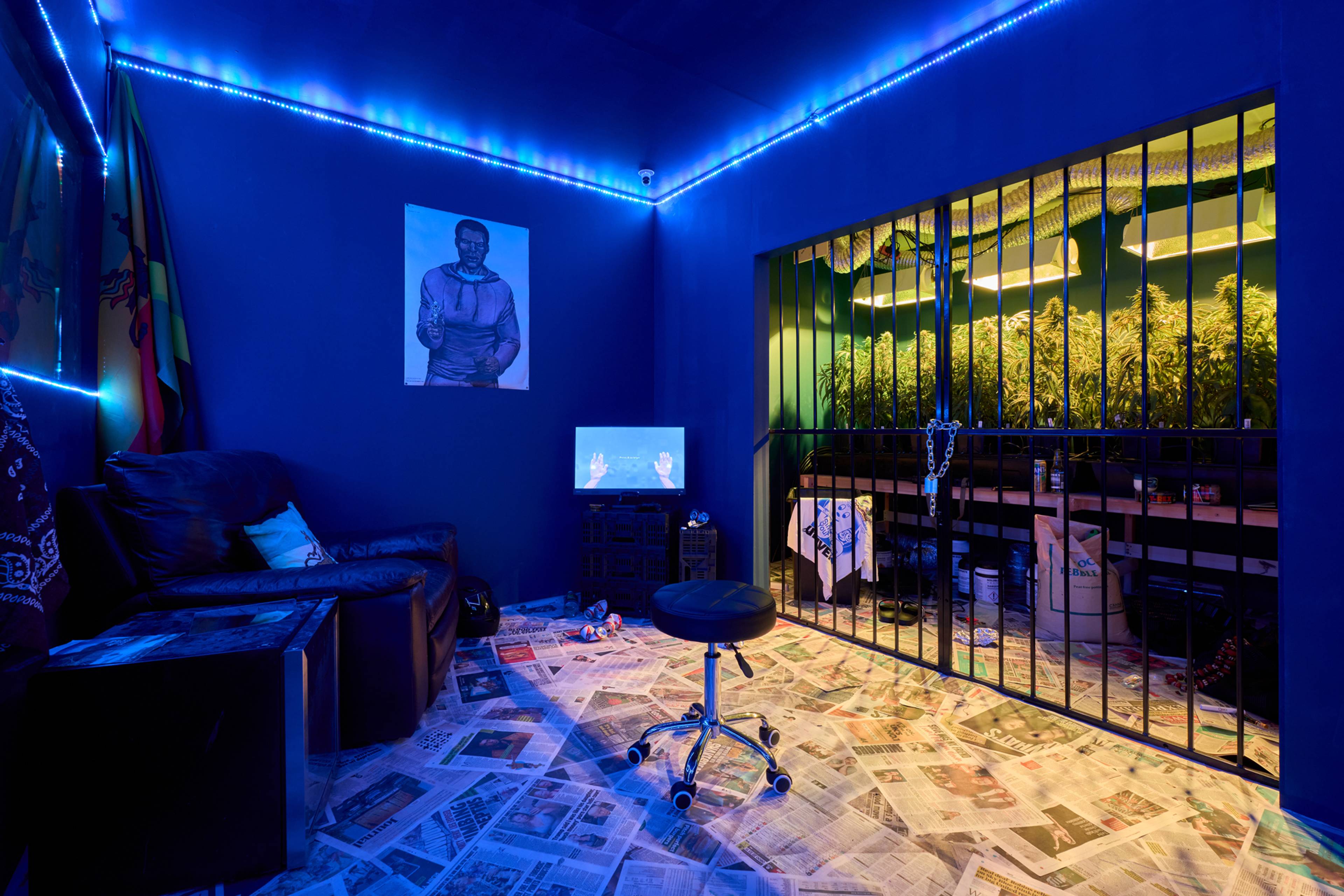Hannah Black: There is a current in your work looking at the overlaps and dissonances between different forms of globalized Black culture. Has your recent move from London to LA given you a new perspective on that?
R.I.P. Germain: In London, I can walk anywhere with no fear. LA is exactly as advertised when it comes to dan- ger to the Black body. You really have to learn the necrogeography of your proximity to death, the racial dynamics of the different areas of the city. Sundown towns exist for Black folk in certain Latino areas. I have to learn that I can’t wear specific types of clothing in specific areas, to not claim affiliation to something I’m In London, I can walk anywhere with no fear. LA is exactly as advertised when it comes to dan- ger to the Black body. You really have to learn the necrogeography of your proximity to death, the racial dynamics of the different areas of the city. Sundown towns exist for Black folk in certain Latino areas. I have to learn that I can’t wear specific types of clothing in specific areas, to not claim affiliation to something I’m not involved in. I have to learn dialogue trees [game-play mechanic used in role-playing video games] that will get me out of danger.
HB: That reminds me of your video game work A Saaarf Demo (2022) where the player has to traverse a series of scary-looking white guys and pick the right response.
RG: Yeah. I know how to diffuse my perceived potential threat in a way that puts people at ease but is quite fracturing for myself as a person. I have had to accept that I have to operate “turned-off.” I can’t be as exuberant as I would be, because my physicality scares people just through existing. This is something that all Black folk have to go through, to various degrees, in various different ways, but it’s just so immediate for me because my appearance is tied to the idea of criminality.
HB: There’s the motif in your work of the false front. In your installations, this is an architectural form. But it sounds like it also has something to do with your everyday embodiment.
RG: Definitely. It’s a layer that’s ever-present in my work. In my installation [Four Bedrooms With An En Suite, A Garage & Garden In A Nice Neighbourhood, 2022] at V.O Curations in London, there was a pile of earth like a barrier, and then a figure behind it covered in brown bandanas. I was thinking about Brown skin and the double layering of always having to be self-aware of your Blackness.
To navigate my installations, audience members have to be spatially aware and to pick up clues. Minute details give you some abstract clue that gives you the code to get through a door. All these mental gymnastics reflect a lived experience. Whenever I enter a space, I have to quickly deduce: OK, what are the social dynamics going on here ...
— This text is printed in full our Summer 2025 issue, Spike #84 – Vulgarity. Get your copy at a discount by subscribing to one year of Spike —


